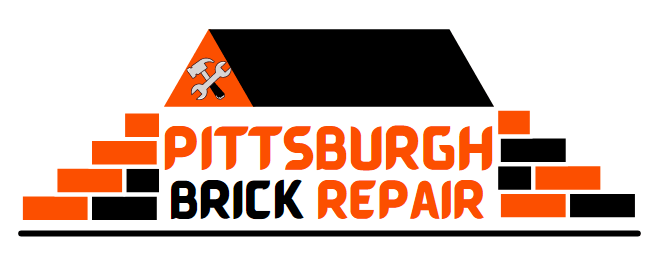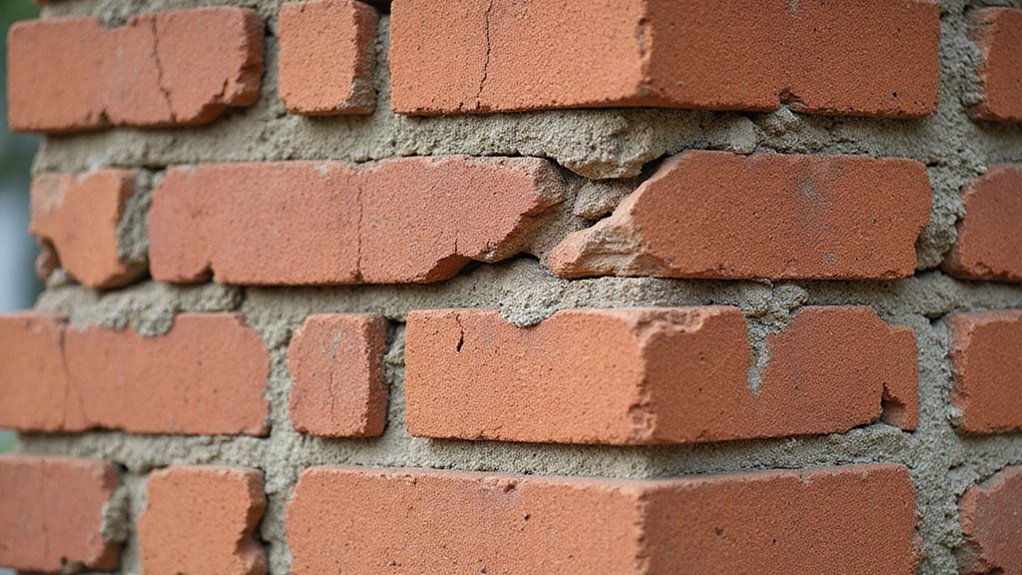When you spot cracks in your chimney, you’ll want to know if they’re just surface blemishes or signs of serious trouble. Not all cracks spell disaster, but some can signal structural weaknesses that could compromise your home’s safety. Are these tiny lines mere cosmetic imperfections, or do they hint at underlying issues that might demand immediate attention? Understanding the difference could save you thousands in potential repairs and protect your home from potential damage.
Types of Chimney Cracks and Their Common Causes
Chimney cracks can appear in various forms and stem from different underlying issues that homeowners should understand. Vertical cracks often result from seasonal expansion factors, where temperature changes cause materials to expand and contract. Horizontal cracks might indicate more serious structural problems, potentially signaling foundation settlement or pressure from surrounding soil.
Repointing mortar issues can also contribute to crack formation, especially in older chimneys with deteriorating mortar joints. Understanding these crack types helps you diagnose potential problems before they escalate, giving you peace of mind and preventing costly future repairs. Knowing what to look for is your first step toward maintaining a safe, sturdy chimney. Professional chimney repair services in Pittsburgh can provide expert assessment and targeted solutions for addressing these structural concerns.
Identifying Hairline Fractures vs. Serious Structural Damage
Some signs can help you distinguish between minor cosmetic damage and serious structural issues in your chimney. When evaluating crack width measurement, hairline fractures under 1/8 inch typically aren’t structural threats. However, wider cracks might indicate potential structural integrity analysis concerns. Look for horizontal or diagonal cracks, especially those wider than a quarter-inch, which could signal foundation movement or significant stress. Pay attention to crack patterns near the base or top of the chimney, as these locations often reveal more serious damage. If you’re unsure, it’s always best to consult a professional chimney inspector who can provide expert evaluation. Fireplace repair experts in Pittsburgh recommend addressing chimney issues promptly to prevent more costly damage over time.
Warning Signs of Potential Chimney Structural Issues
Anything beyond minor cracks could signal serious trouble for your home’s structural integrity. Chimney deterioration patterns often reveal underlying issues that you can’t afford to disregard.
Look for wide horizontal cracks, leaning walls, or noticeable tilting, which might indicate foundational problems. During seasonal maintenance concerns, carefully inspect for signs like crumbling mortar, bulging brickwork, or moisture intrusion. These warning signs suggest potential structural damage that could compromise your chimney’s stability.
Don’t wait until minor problems become costly repairs. Regular inspections and prompt attention can protect your home and safeguard your family’s well-being.
Professional Inspection Techniques and Diagnostic Tools
When professionals assess chimney damage, they rely on advanced diagnostic techniques that go beyond what untrained eyes can detect. Their exhaustive approach includes:
- Thermal imaging to reveal hidden structural weaknesses
- Moisture detection tools to identify potential water infiltration
- Specialized camera scopes for internal chimney wall inspection
These professional methods help you understand the true extent of chimney damage. Thermal imaging can pinpoint temperature variations that suggest structural compromises, while moisture detection reveals potential long-term degradation risks. By utilizing these sophisticated diagnostic tools, experts can accurately determine whether your chimney’s cracks are merely cosmetic or signal more serious structural concerns.
Understanding the Impact of Climate and Age on Chimney Integrity
The integrity of a chimney isn’t just about its construction—it’s also deeply influenced by environmental factors and the passage of time.
Climate plays a significant role in material deterioration, with extreme temperature changes causing expansion and contraction that stress your chimney’s structure. Freeze-thaw cycles can create microscopic cracks that gradually widen, while humidity and rainfall accelerate potential damage.
Your chimney’s age compounds these environmental challenges, as older masonry becomes more vulnerable to structural weakening. Regular inspections can help you catch and address these subtle changes before they become serious, costly problems.
When to Repair: Cost-Effective Strategies for Chimney Maintenance
Although chimney maintenance might seem formidable, proactive and strategic repairs can save homeowners significant money in the long run. Consider these cost-effective strategies:
- Schedule annual maintenance with a professional inspector to catch minor issues early
- Perform seasonal inspections before extreme weather hits
- Address small cracks immediately to prevent more extensive damage
Regular maintenance isn’t just about preventing problems; it’s about preserving your chimney’s health and your home’s value. By investing a little time and effort now, you’ll save substantially in potential repair expenses later.
You’ll protect your home’s structural integrity and avoid costly future repairs by staying vigilant.
DIY Assessment vs. Professional Evaluation
Safeguarding your chimney’s structural integrity necessitates discernment in determining when to roll up your sleeves and when to summon the professionals. DIY assessment methods can assist you in identifying initial signs of damage, such as minor surface cracks or marginal mortar deterioration.
However, the utilization of professional expertise becomes indispensable when you’re uncertain about the severity of structural issues. Trained inspectors possess specialized tools and knowledge to detect concealed problems that might evade an untrained eye.
While you can perform preliminary checks, complex or potentially perilous chimney conditions mandate expert evaluation to guarantee your home’s safety and avert expensive future repairs.
Long-Term Consequences of Untreated Chimney Cracks
Every seemingly minor chimney crack can potentially snowball into a catastrophic structural nightmare if left unaddressed. Ignoring these warning signs could lead to serious consequences for your home:
- Significant decrease in home resale value
- Increased risk of complete chimney collapse
- Potential structural damage to surrounding walls and foundation
Untreated cracks compromise your chimney’s integrity, allowing water infiltration that accelerates deterioration. As moisture seeps into existing fissures, it expands and contracts with temperature changes, widening gaps and weakening structural support.
Eventually, what started as a small crack could convert, alter, or change into a costly, dangerous home repair that threatens your family’s safety and your property’s overall structural stability.
Frequently Asked Questions
Can Small Chimney Cracks Lead to Serious Structural Damage?
You’ll want to take small chimney cracks seriously, as minor expansion issues and frost heave concerns can escalate, potentially compromising your home’s structural integrity if left unchecked.
How Quickly Do Chimney Cracks Worsen Over Time?
You’ll notice crack propagation speed varies based on environmental factors, but minor cracks can widen 1-2mm annually. Don’t ignore them—regular inspections help prevent structural damage from escalating crack growth rates.
Are Older Homes More Prone to Chimney Structural Issues?
You’ll find older homes are definitely more susceptible to chimney damage due to repeated seasonal changes, causing masonry to expand, contract, and gradually weaken structural integrity over decades of exposure.
Do Seasonal Temperature Changes Affect Chimney Crack Development?
You’ll notice freeze thaw cycles can dramatically impact your chimney’s integrity. Temperature fluctuations cause masonry materials to expand and contract, which’ll gradually create stress cracks that potentially compromise structural stability.
What Insurance Coverage Exists for Chimney Crack Repairs?
Your homeowner’s insurance might cover chimney repairs, but it’ll depend on the cause. Get professional chimney repair cost estimates to understand potential out-of-pocket expenses and your policy’s specific coverage details.

